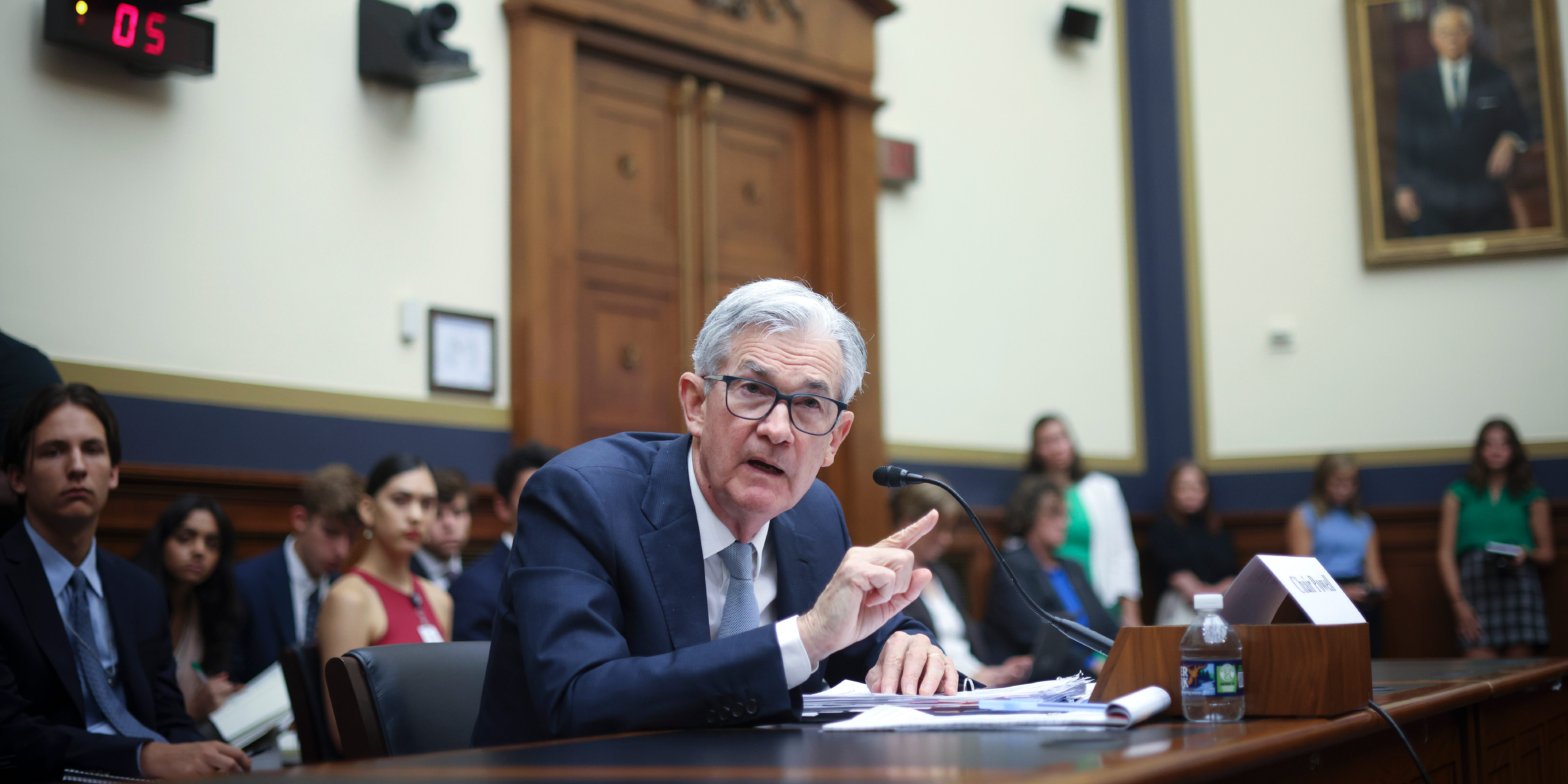A key recession indicator flashed its loudest warning ever on Tuesday. The inversion between the 2-year and 10-year Treasury yields hit a record 103.5 basis points. That came after Fed Chairman Jerome Powell said rates will likely go higher than anticipated. Loading Something is loading.
Thanks for signing up!
Access your favorite topics in a personalized feed while you’re on the go.
A key recession indicator flashed its loudest warning ever after Federal Reserve Chairman Jerome Powell said benchmark rates will likely go higher than once anticipated.
The inversion between the 2-year and 10-year Treasury yields hit a record 103.5 basis points on Tuesday, according to Refinitiv data. It later narrowed to 102.4 basis points.
In normal economic times, shorter-term yields are below longer-term yields. But for months, the 2- and 10-year yields have been inverted amid growing recession fears, as the Fed continues to tighten policy to rein in inflation.
The 2-year yield currently sits at 4.992% while the 10-year yield is 3.968%. Meanwhile, there’s a 61.6% probability the Fed will raise its benchmark rate by 50 basis points on March 22, up from 31.4% a day earlier.
Hopes for less Fed hawkishness briefly rose at the start of the year, when price data showed more progress on inflation. But since then, fresh reports indicated the economy and inflation remain resilient.
Starting off a two-day appearance on Capitol Hill to discuss the central bank’s monetary policy, Powell indicated that the Fed was prepared to keep tightening interest rates.
“The latest economic data have come in stronger than expected, which suggests that the ultimate level of interest rates is likely to be higher than previously anticipated,” he said. “If the totality of the data were to indicate that faster tightening is warranted, we would be prepared to increase the pace of rate hikes.”
The last time the yield curve inverted by more than 100 basis points, or 1 percentage point, was in 1981, due to similar circumstances. Then-Fed Chair Paul Volcker was also battling surging inflation. Recession followed and the unemployment rate soared.
